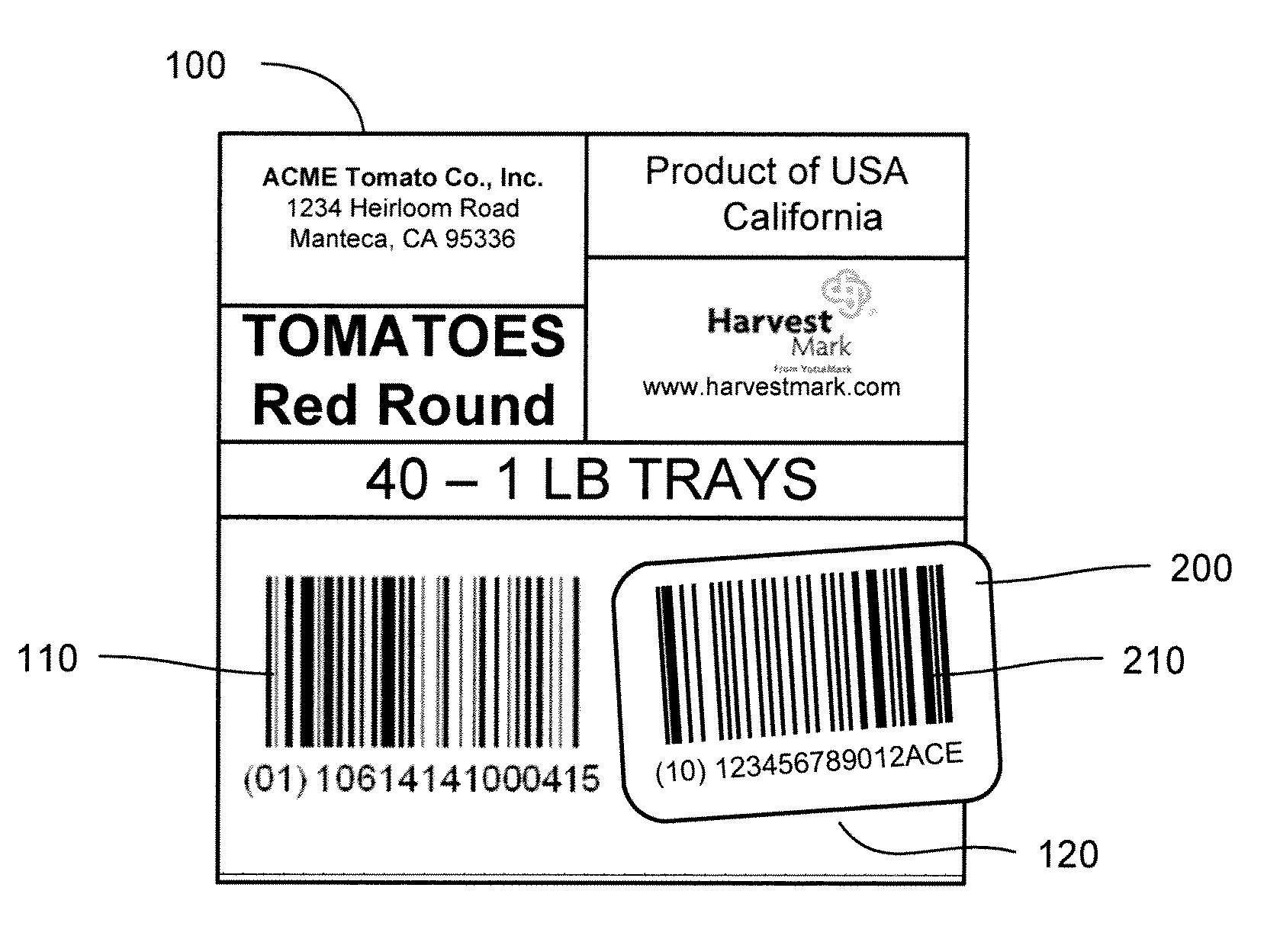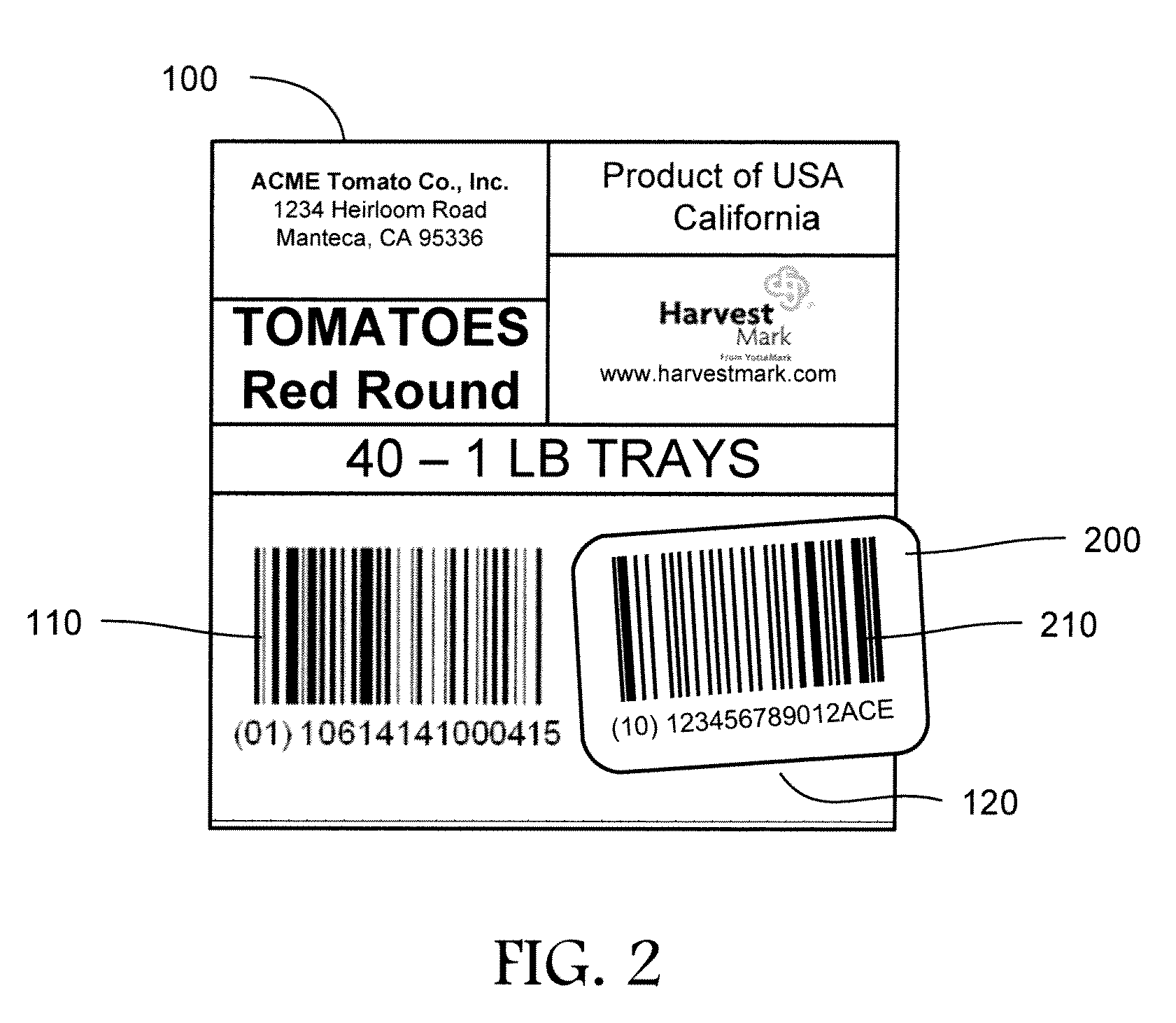Case-Level Traceability without the need for inline printing
a traceability and case technology, applied in the field of consumer product traceability, can solve the problems of inconvenient reading, poor printing quality, and inconvenient maintenance of the inkjet system, and achieve the effects of avoiding inconvenient reading and avoiding inconvenient printing
- Summary
- Abstract
- Description
- Claims
- Application Information
AI Technical Summary
Problems solved by technology
Method used
Image
Examples
Embodiment Construction
[0017]The present disclosure is directed to improving the traceability of goods in the supply chain. Accordingly, unique identifiers that are both machine-readable and human-readable, in accordance with the traceability guidelines noted above, are added to cases. In one implementation, a pre-printed standard case label includes a common identifier associated with non-lot-specific information common to the items in every case, such as brand name. This case label is applied to every case, sometimes well in advance of packing the case with item-level packages such as clamshells of produce. A tag is later added to each case, more temporally proximate to the act of packing the case, where the tag includes the unique identifier. The unique identifier is associated with lot-specific information and may also be associated with non-lot-specific information. In some instances, the case label includes a space designated for adding the tag next to the common identifier.
[0018]Additionally, in so...
PUM
 Login to View More
Login to View More Abstract
Description
Claims
Application Information
 Login to View More
Login to View More - R&D
- Intellectual Property
- Life Sciences
- Materials
- Tech Scout
- Unparalleled Data Quality
- Higher Quality Content
- 60% Fewer Hallucinations
Browse by: Latest US Patents, China's latest patents, Technical Efficacy Thesaurus, Application Domain, Technology Topic, Popular Technical Reports.
© 2025 PatSnap. All rights reserved.Legal|Privacy policy|Modern Slavery Act Transparency Statement|Sitemap|About US| Contact US: help@patsnap.com



